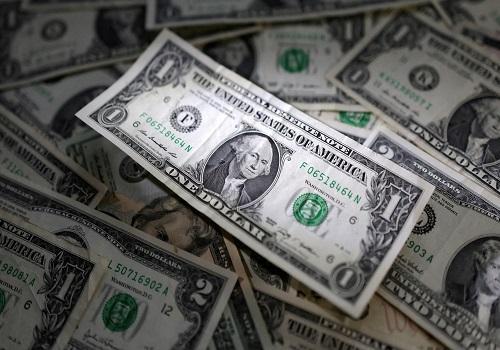
Weak Bond Sale, US Fiscal Woes Drag Dollar, Shake Wall Street
The US dollar tumbled to a two-week low against the yen on Thursday, as investors grew increasingly skeptical about the government’s financial outlook. The decline was fueled by a weak 20-year Treasury bond auction and concerns over the country’s fiscal woes. Meanwhile, President Donald Trump continued his efforts to push his major spending and tax-cut bill through Congress, which added to the uncertainty.
The dollar’s slump against the yen was the largest since April 2018, as investors sought safer assets amid the growing economic uncertainty. The US currency has been under pressure in recent weeks due to a combination of factors, including the ongoing trade tensions with China, the prospect of higher interest rates, and concerns over the government’s ability to tackle its growing debt.
The 20-year Treasury bond auction, which was the largest sale of its kind in history, failed to impress investors. The auction saw a yield of 3.375%, which was higher than expected, but the demand was weak, leading to a decline in prices. This was seen as a sign of growing unease among investors, who are becoming increasingly risk-averse.
“The dollar is being dragged lower by the weakness in the bond market and the growing concerns over the government’s fiscal outlook,” said Robert Rennie, chief economist at Westpac Banking Corp. “The auction was a disaster, and it’s a sign that investors are getting increasingly worried about the US economy.”
The bond market is an important indicator of investor sentiment, and a weak auction can be a sign of growing unease. The 20-year Treasury bond is considered to be a safe-haven asset, and a decline in prices suggests that investors are seeking safer assets.
The dollar’s decline against the yen was also supported by the Japanese currency’s strength. The yen has been rising in recent weeks due to the country’s stable economic growth and low interest rates. The Japanese central bank has implemented a series of monetary easing measures, which has boosted the currency’s attractiveness.
The decline in the dollar has also had an impact on other currencies, including the euro and the pound. The euro fell to a two-week low against the dollar, while the pound declined to a one-week low.
“The dollar’s weakness is a reflection of the growing concerns over the US economy,” said Kenji Fujita, a currency strategist at Bank of America Merrill Lynch. “The government’s fiscal outlook is becoming increasingly uncertain, and investors are seeking safer assets.”
President Trump’s efforts to push his spending and tax-cut bill through Congress have added to the uncertainty. The bill, which is expected to increase the government’s debt by over $1 trillion, has been criticized by many economists and investors.
“The bill is a recipe for disaster,” said Mark Zandi, chief economist at Moody’s Analytics. “It will increase the government’s debt and lead to higher interest rates, which will hurt the economy.”
The decline in the dollar has also had an impact on the cryptocurrency market. Bitcoin, which has been on a record-breaking rally in recent weeks, extended its gains, as investors sought riskier assets. The cryptocurrency has been rising in value due to its perceived safety and the growing demand for digital assets.
“Investors are seeking riskier assets, and bitcoin is benefiting from the dollar’s weakness,” said Tom Lee, head of research at Fundstrat Global Advisors. “The cryptocurrency is a safe-haven asset, and its value is likely to continue to rise in the coming weeks.”
In conclusion, the dollar’s decline against the yen and other currencies is a sign of growing concerns over the US economy. The weak 20-year Treasury bond auction and the government’s fiscal woes have added to the uncertainty, and investors are seeking safer assets. The decline in the dollar has also had an impact on the cryptocurrency market, as bitcoin extends its record-breaking rally.






